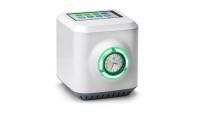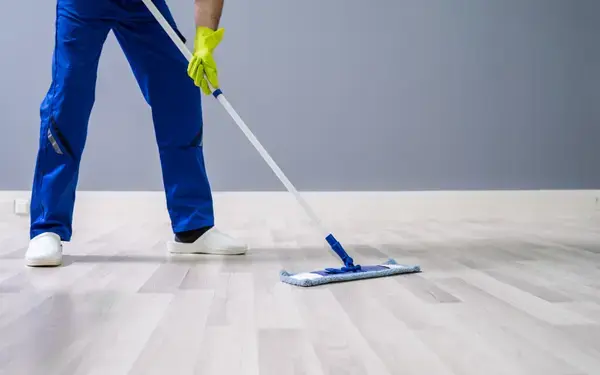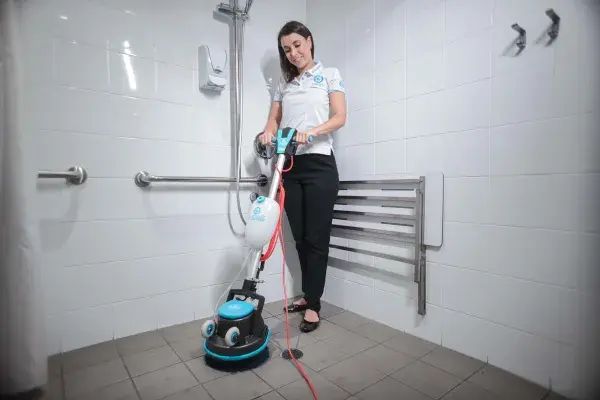You are reading: Why You Need To Know About VOCs
08 September 2022
6min read time
Brooke Payne
Why You Need To Know About VOCs
Share:

Key Insights
- VOCS are carbon-containing chemicals that evaporate readily at room temperature
- They can be found indoors and outdoors
- They can be reduced by cleaning your air with air purifiers such as the i-air pro
First things first, what are VOCs?
Volatile Organic Compounds (VOCs) are carbon-containing chemicals that evaporate readily at room temperature. They are found in many common household materials and products and depending on the VOC, may be dangerous when inhaled over long periods of time. VOCs may also be absorbed into airborne particulates or indoor surfaces.
This article will focus on Indoor VOCs, how they form, and how they can be reduced to improve Indoor Air Quality (commonly known as IAQ).

Where do VOCs come from?
VOC emissions occur from both natural and manmade sources. Natural occurring VOCs like isoprenes and monoterpenes are produced by trees to repel insects and attract pollinators. Manmade VOC emissions may result from the vaporisation of chemical compounds directly into the atmosphere or incomplete combustion of fossil fuels.

What are common sources of VOCs in commercial buildings?
VOCs are found in both indoor and outdoor air. Some of the more common ones in indoor environments include benzene (paint), formaldehyde (carpets), and toluene (glue).
VOCs may be released into the air by household or office products including personal care items, glues, air fresheners, deodorants, fly sprays and printers. They're also frequently produced from gas emissions from new building materials such as wood, carpet, and paint.
The level of VOCs found indoors can vary significantly depending on the activities of the occupants and their use of products that emit VOCs. However, studies have found that VOC levels can average 2 to 5 times higher in indoor environments than outdoors.
Ways to reduce or prevent VOCs
Reduce VOC levels and improve indoor air quality with these tips:
- Off-gas products before using them. For example new furniture will mostly be made in combination with glue/foam and other materials that can emit VOCs. Ventilate thoroughly before bringing any new furniture into the environment.
- Use less chemicals in cleaning, plus chemicals that are known to have less environmental impact and milder formulations
- Improve ventilation. This could include a range of natural ventilation (windows/outdoor air passage) and mechanical ventilation (air conditioning)
- Use air scrubbers (air purification machines) with carbon pre filters and VOC removal technology such as photocatalytic oxidation
- The most significant step you can take towards removing VOCs is through using a high capacity air purifier like the i-air Pro .
Read: Four cleaning technologies improved cleaning in aged care.
How does the i-air Pro work?
The i-air Pro removes VOCs from the air in two steps:
Step one: carbon pre-filter
VOCs are collected on a pre-filter through a natural reaction called adsorbtion (see section below). This is a relatively common air purification process and not unique to the i-air Pro.
Step two: self-cleaning kill chamber
The unique kill chamber combines UVC technology with photocatalytic oxidation (PCO) to neutralise bacteria and other particulate matter. UVC is a well known germicidal technology proven to work while PCO breaks down VOCs in an oxidation and reduction process.
This second filtration step is crucial to understanding why the i-air is superior to conventional air purification machines relying solely on carbon and/or HEPA filters.
Adsorbtion vs Absorption – what is the difference?
In absorption, the substance you want to remove (let’s say water) is absorbed into the structure of the absorbent (like a sponge), but does not become a part of the absorbent on a molecular level (the water doesn't become chemically bonded to the sponge, it just fills in the spaces inside it).
Carbon filters on the other hand use adsorption, not absorption. The key difference is that during adsorption the pollutants do become a part of the absorbent on a molecular level, bonding to the outside of a carbon molecule. This allows carbon air filters to remove VOCs from the air. The drawback is that over time, the filter runs out of space to adsorb the gaseous pollutants, and once saturated, the filter is no longer effective.
When a carbon air filter is saturated, you might notice it giving off a strange odour. This is a strong indicator that it’s time to change the carbon filter.
This inherent weakness of carbon filters is why the additional UVC + PCO neutralisation process of the i-air pro makes it so much better at removing VOCs from the air.
Common Questions Answered
1. What are VOCs and how do they impact indoor air quality?
Answer: Volatile Organic Compounds (VOCs) are organic chemicals that easily evaporate at room temperature. They can significantly degrade indoor air quality, leading to health issues such as headaches, dizziness, and respiratory problems.
2. What common household products contain VOCs?
Answer: Common household products that may contain VOCs include paints, solvents, cleaning supplies, air fresheners, and adhesives. Awareness of these products is crucial for minimizing exposure and ensuring a healthier indoor environment.
3. How can you reduce VOC levels in your home or workplace?
Answer: Reducing VOC levels can be achieved by improving ventilation, using low-VOC or VOC-free products, ensuring proper storage of chemical substances, and regularly maintaining HVAC systems to promote clean air circulation.
References
Environmental Protection Agency (EPA) – Volatile Organic Compounds' Impact on Indoor Air Quality
URL: https://www.epa.gov/indoor-air-quality-iaq/volatile-organic-compounds-vocs
What is the i-air Pro?
Media and Insights
Join the movement that's changing what clean means.
Be part of a cleaner world. Get a live demo at a time that suits you.
Book a Demo










